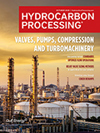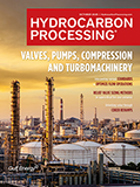Equipment
Sulzer develops gas turbine solution for Chinese powerplant
Sulzer has developed and implemented a modular retrofit solution to help a gas turbine powerplant in Jiangsu Province, China, reduce nitrogen oxide (NOx) emissions and comply with a stringent new emissions standard.
Amarinth wins order from ADNOC for API 685 OH2 and VS4 Magnetic Drive pumps
Amarinth, a world-leading, net-zero designer and manufacturer of low lifecycle cost centrifugal pumps and associated equipment, primarily for the offshore and onshore oil & gas industries; nuclear and renewable energy generation; defense; desalination; process and industrial markets, has won an order from ADNOC for API 685 OH2 and VS4 Magnetic Drive pumps that will be used on the Ruwais NGL trains, United Arab Emirates.
Asia-Pacific chemical processing industry expansion contributes to the shell and tube heat exchangers market
The expansion of the chemical processing industry is a notable factor contributing to the growth of the market in the Asia Pacific region. The region has a strong chemical processing sector, and the increasing demand for chemical products is driving the demand for heat exchangers, which are used to transfer heat in various chemical processing applications.
Emerson wins contract to automate $8.5-B Golden Triangle Polymers facility
Emerson will provide automation technologies, software and analytics from its Plantweb™ digital ecosystem for the Golden Triangle Polymers Project, a world-scale integrated polymers facility on the Texas Gulf Coast.
ABB wins automation contract for Cerilon’s first GTL plant
ABB will supply front-end design services, including automation and digital solutions for $2.8 billion gas-to-liquids facility.
Lithium Americas Corp. awards licensing technology for a 3,000-tpd sulfuric acid plant
MECS, a subsidiary of Elessent Clean Technologies, was contracted for the provision of a 3,000-tpd MECS® sulfuric acid plant by Lithium Americas Corp.
Occidental to use Siemens Energy's technology for large-scale direct air capture plant
Siemens Energy compressors will be used at Occidental’s first large-scale direct air capture (DAC) plant in Texas’ Permian Basin.
AWS unveils startups selected for the Clean Energy Accelerator 3.0 program
Amazon Web Services (AWS) announced the startups selected for the Clean Energy Accelerator 3.0. The program is designed to facilitate collaborations with mature startups developing breakthrough clean energy technologies.
Executive Viewpoint: Drive the decarbonization of chemical plants through energy efficiency enhancements
Like all process industries, the chemical sector is under intense pressure to drastically reduce its carbon footprint and reach net-zero emissions by 2050.
Control valves for carbon sequestration applications
Greenhouse gas (GHG) reduction projects have become a focus for many nations around the world—carbon capture technologies are a way to reduce the release of carbon into the atmosphere and help contribute to meeting emissions targets.

- Ducor Petrochemicals, Blue Circle Olefins partner to create a fully circular supply chain for polypropylene 11/18
- World's first: Air Liquide’s innovative technology converts ammonia into hydrogen at industrial scale 11/18
- Borouge to supply advanced polyolefin solutions for next-generation vehicles 11/18
- ASTM International signs MoU with Gulf Cooperation Council Laboratory Company for Technical Services (GCC Lab TSCo.) 11/18
- KBC launches Visual MESA Energy Management System 7.3 11/18
- MHI Compressor secures steam turbine contract at Baton Rouge (U.S.) olefins plant 11/18




